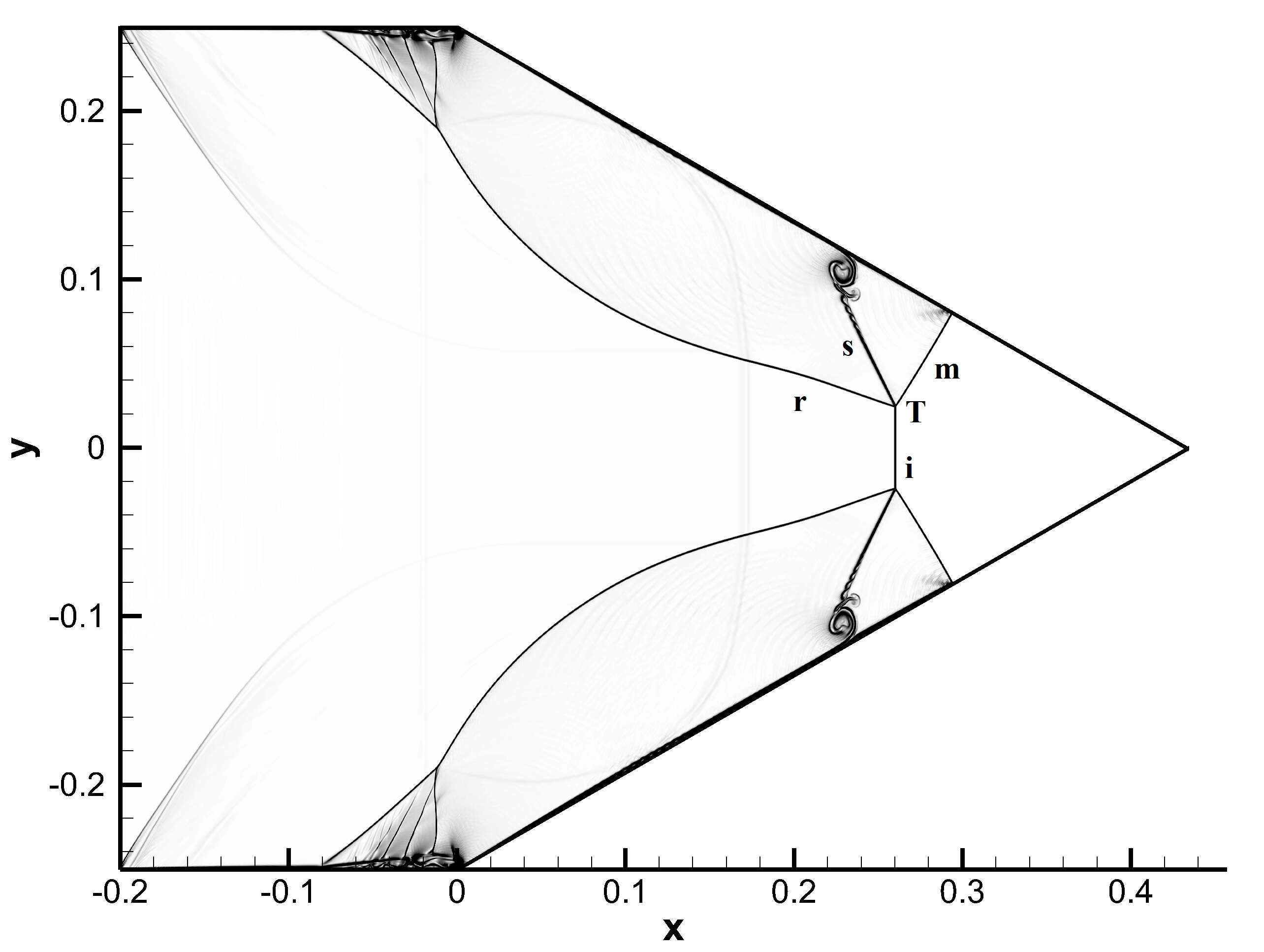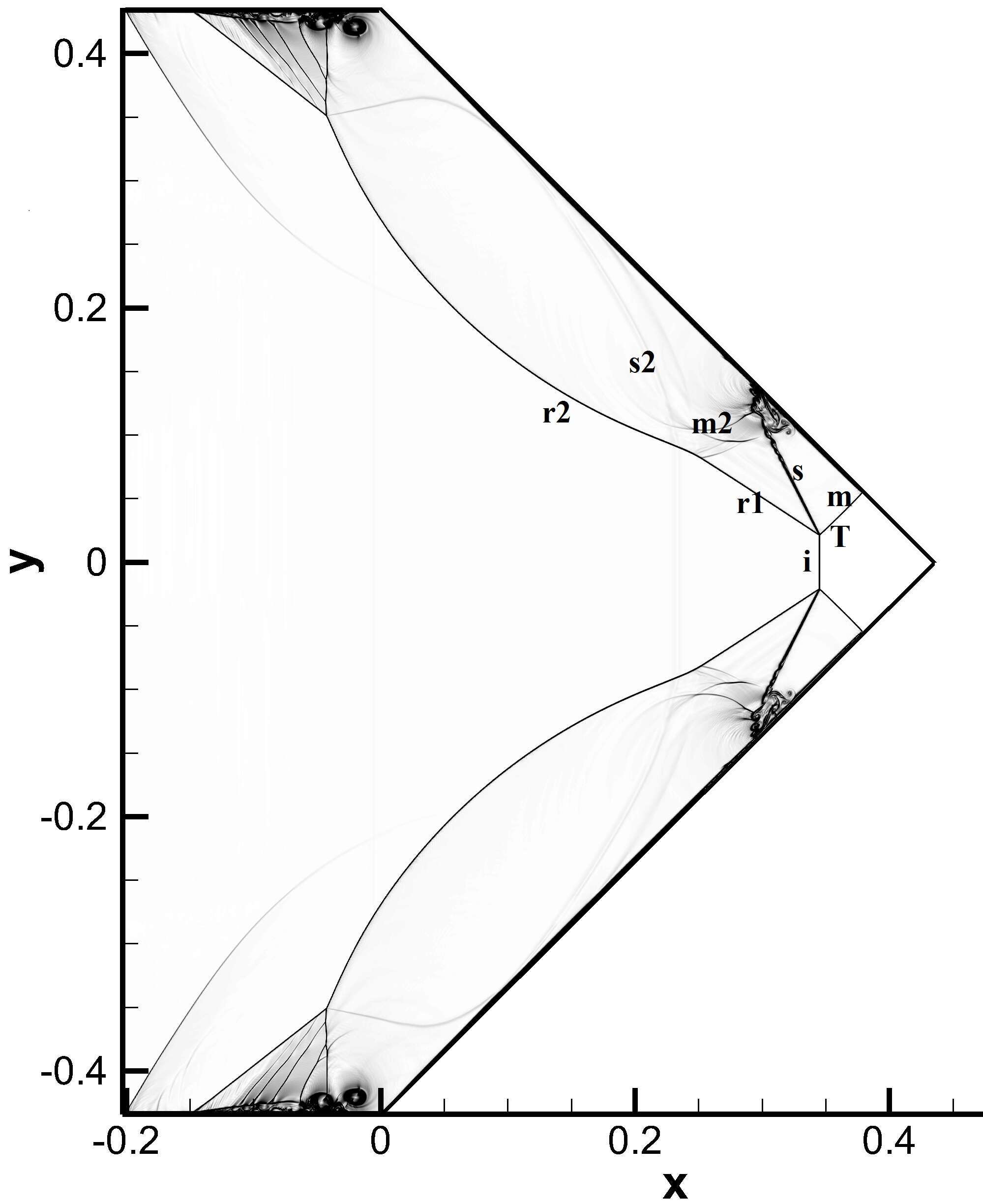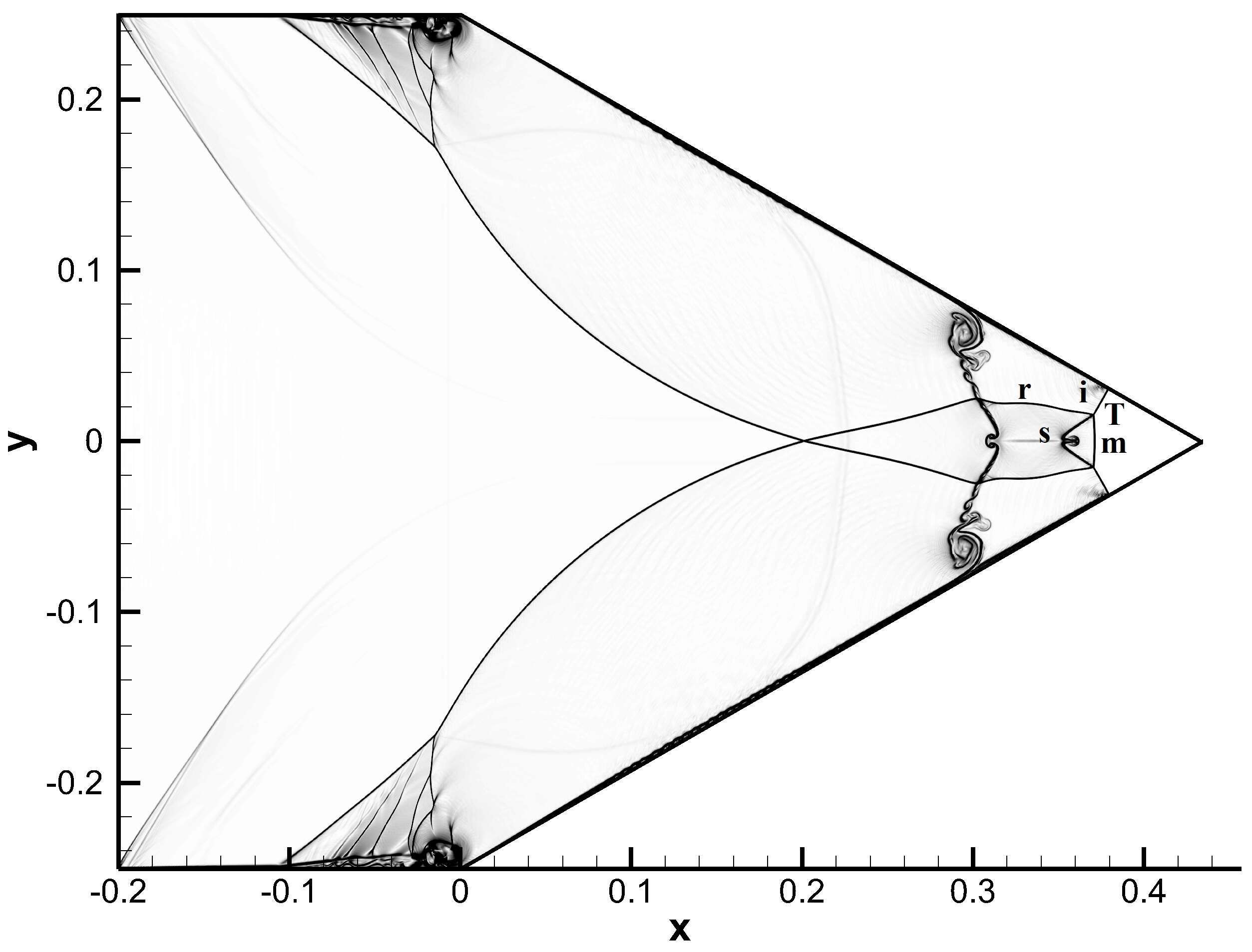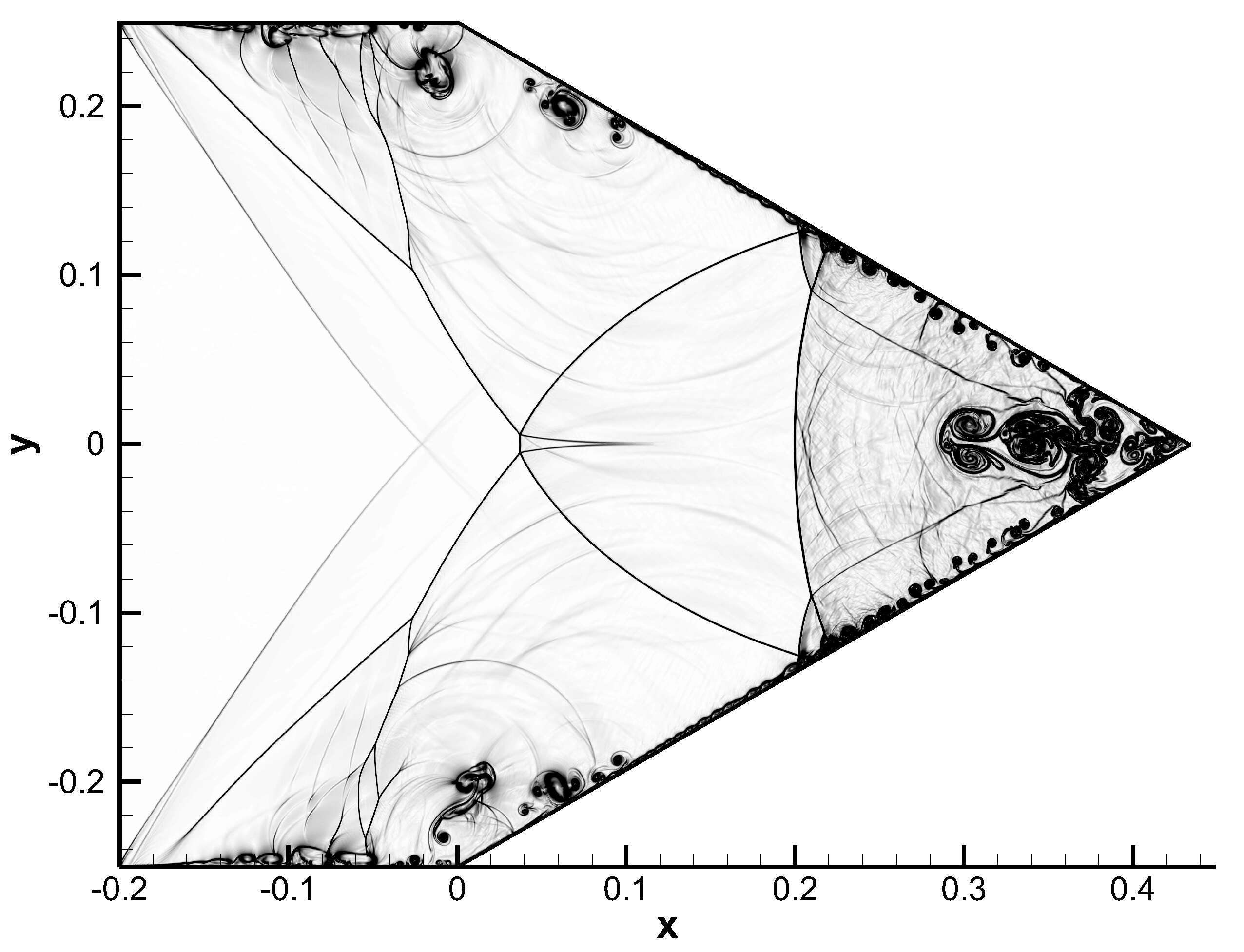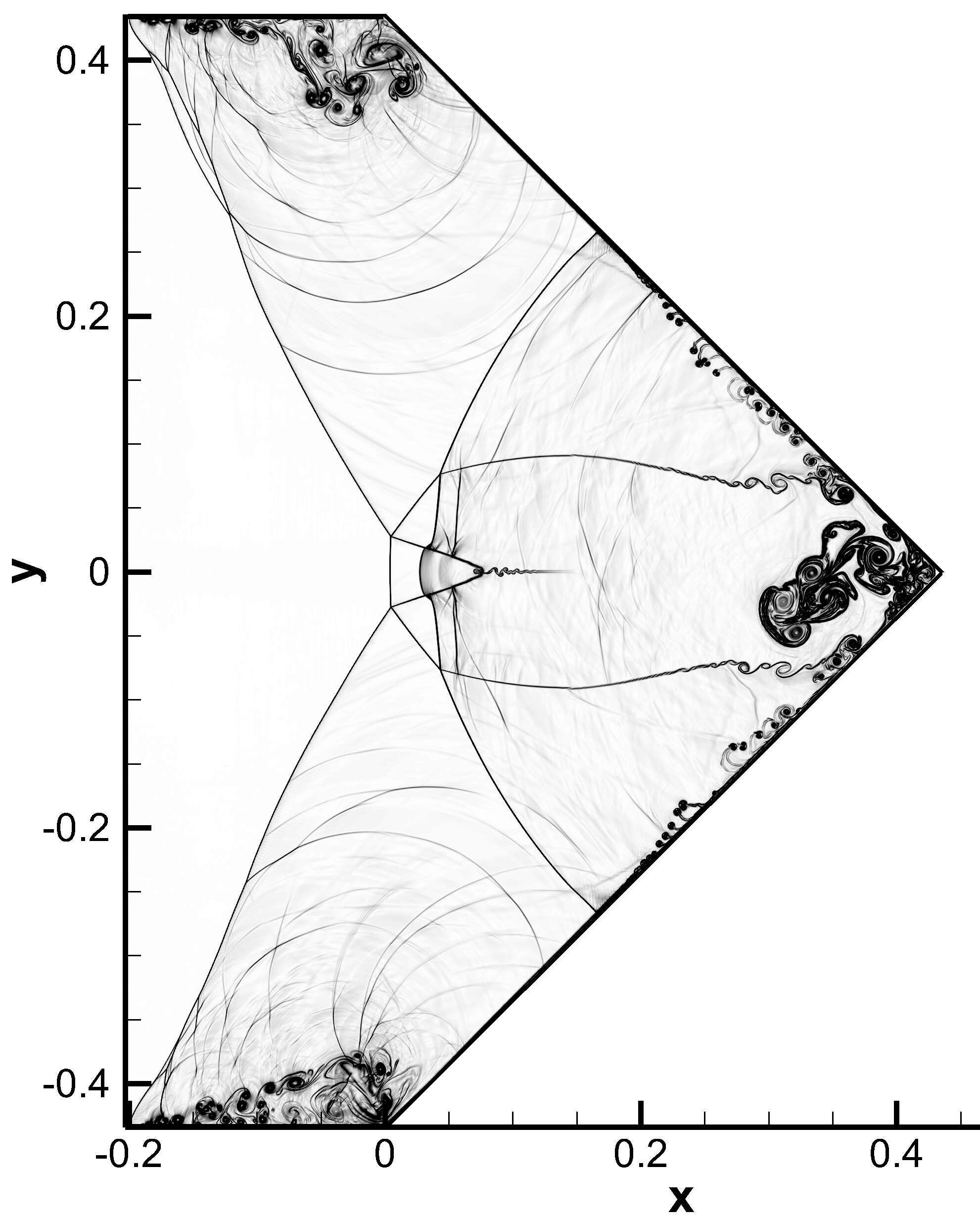Abstract:Based on the large eddy simulation ,combined with the fifth-order WENO scheme and the AMR technology, the phenomena of shock wave reflection and focusing in the triangular wedges with various half-corner angle have been numerically simulated under the condition of Ma=6. The numerical results reveal that the change of the half-corner angle has an apparent influence on the kind of shock reflection and the jets after shock wave focusing.
The initial incident shock wave will have a Mach reflection on the ramp surface, then the triple points will collide at the center line of the wedge with the incident shock wave propagating. Due to the high Mach number, the pressure behind the slipstreams is higher than the forward, so that the Mach reflection will induce a wall-jetting on the surface of the wedge. When the triple points collide, there is a high temperature and pressure area generating at the collision point where the initial incident shock is substituted by a new Mach stem induced by shock-shock interaction and two vortexes, one of which is backward and another is forward, are generated on the slipstreams. After the triple points separating, the structure of the shock reflection is clearly different. The position of the new incident shock wave and the Mach stem is exchanged, and the termination of the slipstreams is at the center line of the wedge. The new shock will repeat the process described above until the shock waves focus on the apex of the wedge. A secondary shock which is induced by shock wave focusing will propagate inversely to interact with the instable slipstreams and the reflected shock waves. The results show that the secondary shock makes the instable slipstreams become vortexes propagating inversely. The vortexes near the apex diffuse along the ramp surface to encounter other vortexes on the wall, which results in a jet in the wedge.
With the half-corner angle increasing, the kind of reflection transforms to transitional-Mach reflection and double-Mach reflection and the stability of the slipstreams decreases from the triple point to the ramp surface. The value of pressure difference between the front and rear area of the slipstreams becomes larger, so that the wall-jetting on the ramp surface becomes more evident as well. The pressure of the high temperature and pressure area generated through the first triple points collision is higher. When the triple points separate, the vortexes induced by the high pressure come out like a jet. Because of the enhance of the half-corner angle, the perpendicular distance between the walls becomes further, therefore the times of the collision of triple points decrease, which means that the structure of the flow field is simply composed of one or two instable slipstreams and reflected shock waves before shock wave focusing at the apex. After the shock wave focusing, the process of the interactions between secondary shock and the slipstreams is similar, but the jet induced by the secondary shock wave makes the propagation of the vortexes in the flow field different.
Keywords shock wave focusing, double-Mach reflection, secondary shock, jet
